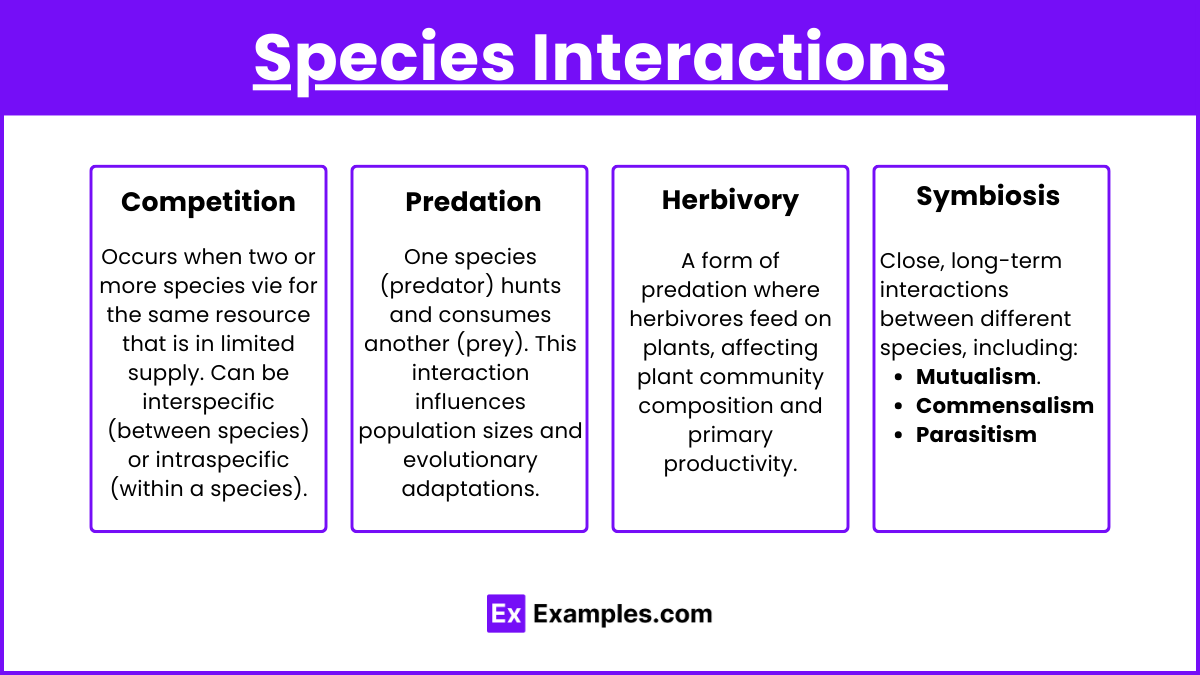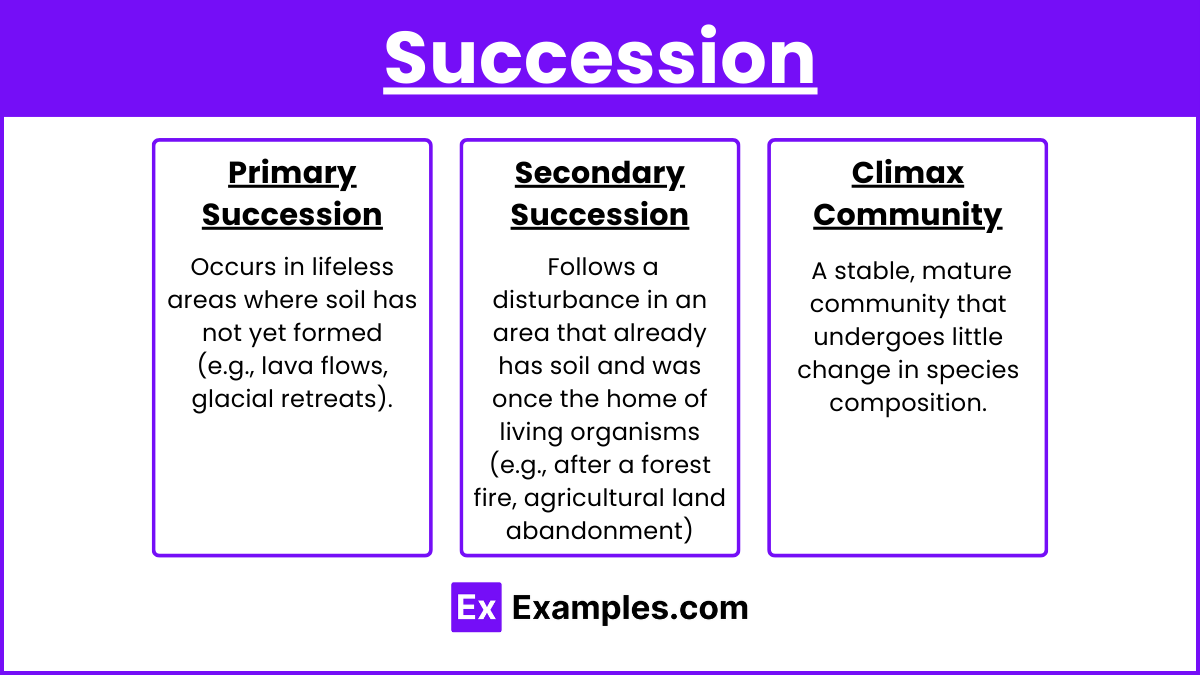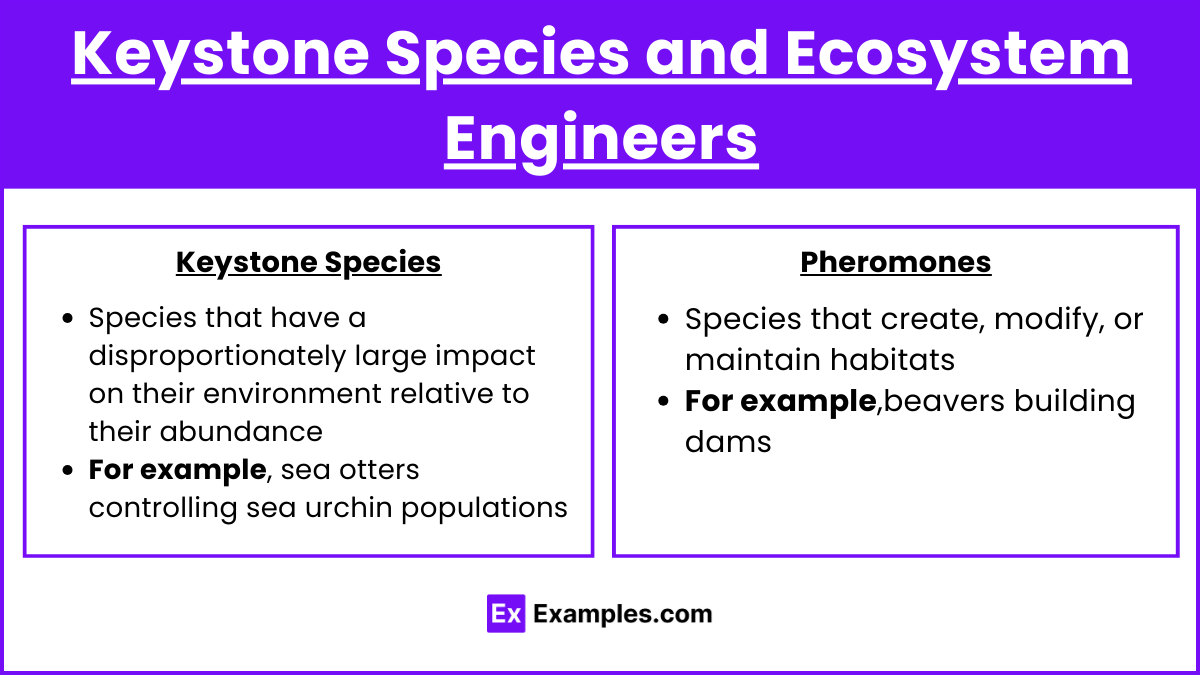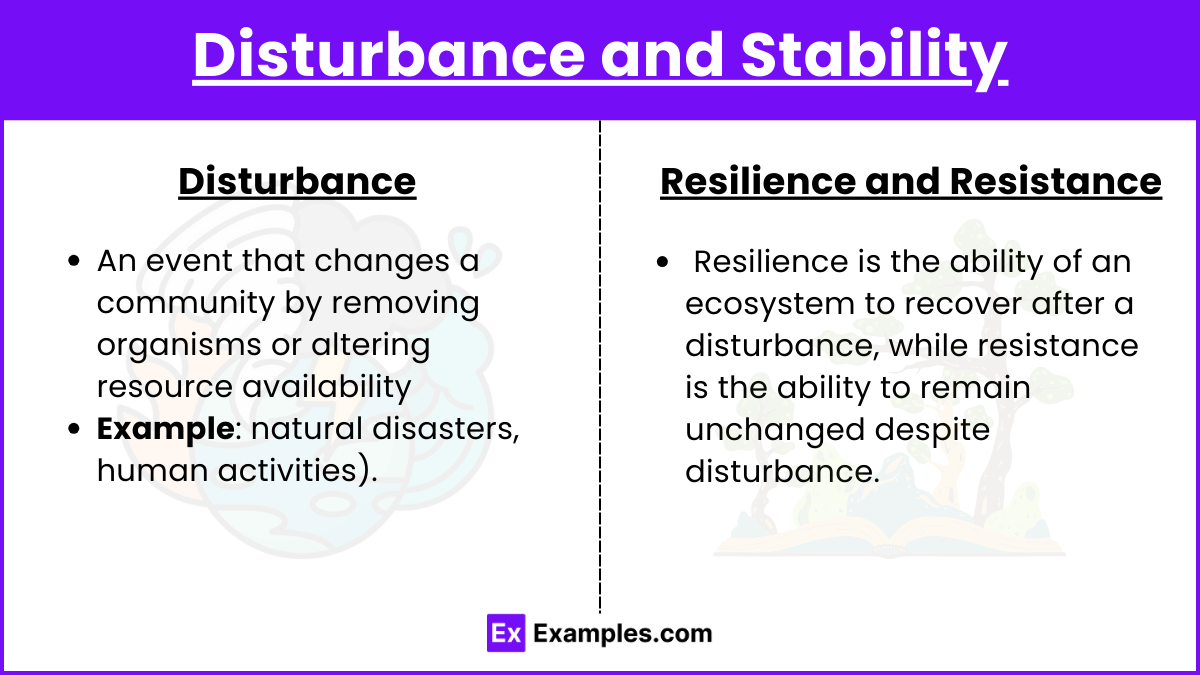In the AP Biology exam, understanding the factors in community and ecosystem dynamics is essential. This topic covers how species interactions, such as competition, predation, and symbiosis, shape communities. It also examines processes like primary and secondary succession, the roles of keystone species and ecosystem engineers, and the impact of disturbances on ecosystem stability. By studying these dynamics, students gain insights into the complex relationships and processes that maintain ecological balance and biodiversity.
Learning Objectives
By studying factors in community and ecosystem dynamics, you will understand how species interactions like competition, predation, and symbiosis shape ecological communities. You will learn about primary and secondary succession, the roles of keystone species and ecosystem engineers, and the impact of disturbances on ecosystem stability. This knowledge will help you analyze the complex relationships and processes that maintain ecological balance and biodiversity, preparing you for the AP Biology exam.
Species Interactions

- Competition: Occurs when two or more species vie for the same resource that is in limited supply. Can be interspecific (between species) or intraspecific (within a species).
- Predation: One species (predator) hunts and consumes another (prey). This interaction influences population sizes and evolutionary adaptations.
- Herbivory: A form of predation where herbivores feed on plants, affecting plant community composition and primary productivity.
- Symbiosis: Close, long-term interactions between different species, including:
- Mutualism: Both species benefit (e.g., bees and flowering plants).
- Commensalism: One species benefits, the other is neither helped nor harmed (e.g., barnacles on whales).
- Parasitism: One species benefits at the expense of the other (e.g., ticks on mammals).
Succession

- Primary Succession: Occurs in lifeless areas where soil has not yet formed (e.g., lava flows, glacial retreats).
- Secondary Succession: Follows a disturbance in an area that already has soil and was once the home of living organisms (e.g., after a forest fire, agricultural land abandonment).
- Climax Community: A stable, mature community that undergoes little change in species composition.
Trophic Structure and Energy Flow

- Food Chains and Food Webs: Describe the feeding relationships and energy flow between organisms. Food chains are linear, while food webs are complex, interconnecting food chains.
- Trophic Levels: Producers, primary consumers, secondary consumers, tertiary consumers, and decomposers.
- Ecological Pyramids: Represent the distribution of biomass, numbers, or energy among trophic levels. Typically, energy decreases as one moves up the pyramid.
Keystone Species and Ecosystem Engineers

- Keystone Species: Species that have a disproportionately large impact on their environment relative to their abundance (e.g., sea otters controlling sea urchin populations).
- Ecosystem Engineers: Species that create, modify, or maintain habitats (e.g., beavers building dams).
Disturbance and Stability

- Disturbance: An event that changes a community by removing organisms or altering resource availability (e.g., natural disasters, human activities).
- Resilience and Resistance: Resilience is the ability of an ecosystem to recover after a disturbance, while resistance is the ability to remain unchanged despite disturbance.
Examples
Example 1: Predator-Prey Dynamics – Wolves and Deer
- Description: Wolves prey on deer, controlling deer populations and preventing overgrazing. This interaction maintains the balance in the ecosystem.
- Impact: Shows the importance of predation in regulating population sizes and promoting biodiversity.
Example 2: Secondary Succession – Forest Recovery
- Description: After a forest fire, the area undergoes secondary succession, starting with pioneer species and eventually returning to a mature forest.
- Impact: Demonstrates the process of community recovery and species replacement over time.
Example 3: Keystone Species – Sea Otters
- Description: Sea otters prey on sea urchins, preventing overgrazing of kelp forests. Without otters, sea urchin populations explode, destroying kelp habitats.
- Impact: Highlights the critical role of keystone species in maintaining ecosystem structure.
Example 4: Mutualism – Bees and Flowering Plants
- Description: Bees pollinate flowers while collecting nectar for food, benefiting both species.
- Impact: Illustrates the importance of mutualistic relationships in ecosystem functioning and plant reproduction.
Example 5: Ecosystem Engineers – Beavers
- Description: Beavers build dams, creating wetlands that provide habitats for many species.
- Impact: Shows how ecosystem engineers can significantly alter habitats and influence biodiversity.
Multiple Choice Questions
Question 1: Which of the following describes a keystone species?
A. A species with the largest population in an ecosystem
B. A species that creates habitats for other species
C. A species with a disproportionately large impact on its environment relative to its abundance
D. A species that is at the top of the food chain
Answer: C. A species with a disproportionately large impact on its environment relative to its abundance
Explanation: Keystone species have a significant impact on their ecosystem and help maintain the structure and balance of ecological communities.
Question 2: What is the primary difference between primary and secondary succession?
A. Primary succession occurs in areas with existing soil, while secondary succession does not
B. Primary succession follows a disturbance, while secondary succession occurs in lifeless areas
C. Primary succession occurs in lifeless areas without soil, while secondary succession follows a disturbance in areas with existing soil
D. Primary succession results in a climax community, while secondary succession does not
Answer: C. Primary succession occurs in lifeless areas without soil, while secondary succession follows a disturbance in areas with existing soil
Explanation: Primary succession starts in areas without soil, such as after a lava flow, while secondary succession occurs in areas where a disturbance has occurred but soil remains.
Question 3: How do mutualistic relationships benefit the species involved?
A. Both species are harmed
B. One species benefits, the other is unaffected
C. Both species benefit
D. One species benefits at the expense of the other
Answer: C. Both species benefit
Explanation: In mutualistic relationships, both species involved benefit from the interaction, such as bees pollinating flowers while collecting nectar


